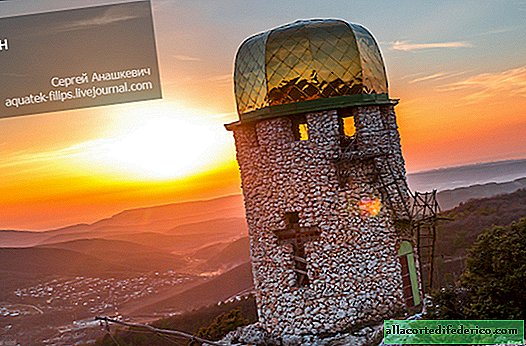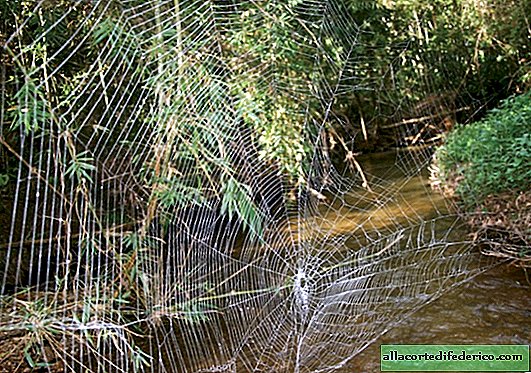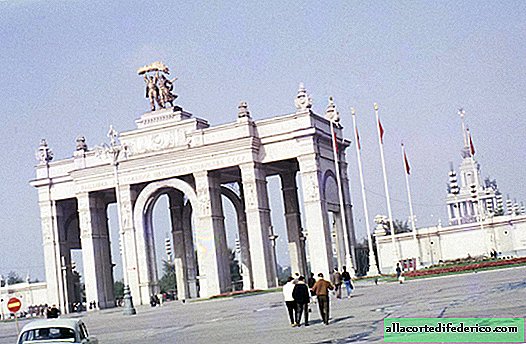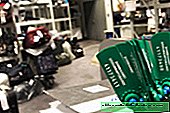Temple of Knowledge: Austrian National Library
When you enter the main hall of the Austrian National Library, you feel as if you were in a magnificent cathedral or in a palace full of magnificent luxury and wealth. And only long rows of medieval volumes in leather covers on the shelves of old racks return the visitor, shocked and open his mouth, to the reality of surprise.
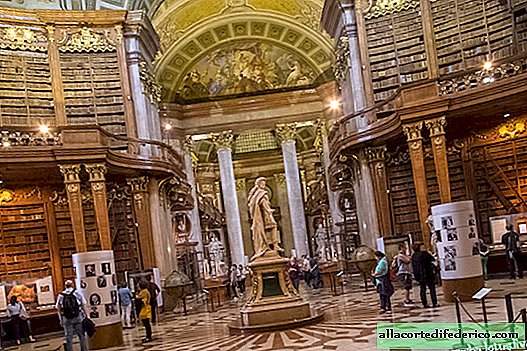
First a must-have moment in history. Formally, the national library in Austria was established about 450 years ago, or rather, in 1575, the proxy of the Habsburg empire received the position of official state librarian. Naturally, there were no library cards in those days - I only read rare books close to the courtyard. And the first folios in the now largest collection of books in Austria were introduced in the 14th century by the Duke Albrecht III, since then the collection has been relentlessly updated and grew like mushrooms on a warm summer day after rain. Choosing a worthy spouse for themselves, the Austrian rulers agreed to include books printed abroad in the bride's dowry. The rich donated valuable items from personal collections in order to gain the favor of the authorities. And the treasury spared no money, regularly compiling long lists of public procurements.

The meeting was expanding, and sooner or later he would need an appropriate storage. The Habsburgs loved to impress, so they did not trifle. Archduke Charles VI in the 1720s ordered the construction of a separate baroque building for the library as part of the Hofburg imperial residence. The court architect of the dynasty Johann Bernhard Fischer von Erlach, who had previously built the Schönbrunn summer palace for the Habsburgs, did not face the dirt again, although the library building does not stand out much from the rest of the Vienna buildings. But when you rise from the hall along the stairs decorated with stucco molding and sculptures and massive wooden doors swing open in front of you, opening the gaze of the main hall, you instantly understand why the library is called the most beautiful and impressive.

For real, you didn’t find yourself in a private library, where for every sneezing disapproving glances will pour on you from all sides. You are in the temple of knowledge, whose decoration is simply impossible to imagine modest and minimalistic. Asceticism was clearly not held in high esteem by the Habsburgs. "Wealth of wealth an elegant life" - such a hashtag could freely sign drafts drawings and estimates for the purchase of materials. A massive arch of almost 80 meters wide hall is supported by smoky marble columns.

On both sides of the hall, carved numbered shelves soar to the ceiling, storing rare and unique editions on their shelves.

In total, the library's collection contains more than 7.5 million books, scientific papers, papyri and maps.

Access to the gallery of the second floor for ordinary mortals is closed, and the first floor will not be able to get closer to such textured and inviting book roots or to erratic stairs due to fencing. For those who like to get acquainted with the literature of the past, medieval books are displayed in several windows. The library collection also includes 8 thousand so-called incunabula, i.e. books published in Europe until the sixteenth century in print runs of several hundred copies.


Especially the oval dome of the hall, where in the center you can see the figure of the deified emperor Charles VI. With angel wings, clutching a pyramid in one hand and a laurel wreath in the other, he soars in the sky in all his greatness. And below, Apollo and Hercules are holding a huge gold medallion with his portrait. No modesty!

For 29 years, Charles VI served as emperor of the Holy Roman Empire, in the center of the hall he is imprinted in stone in a proud pose with a laurel wreath on his head; authentic attire complements the created image of the ancient Roman commander, only magnificent hair and shoes are given out in the majestic figure of the Austrian monarch.

In the corners of the central part of the hall there are 350-year-old earth and starry globes larger than a meter in diameter - the work of the Venetian geographer and historian Vincenzo Coronelli.

If you are interested in cartography, check out the Globes Museum, located here, in the library building - about 200 globes, mainly created until the middle of the 19th century, are constantly on display, and almost 400 more are stored in storage rooms.

Charles VI did not hesitate to perpetuate his name and greatness of the Habsburgs.

In addition to galleries with thousands of volumes, the frescoes on the dome and arches of the hall left the most vivid impression, only after looking closely at them, you understand that even patterns, sockets and curls are made in alfreyskoy technique so skillfully that at first it is difficult to doubt their relief and volume.

Such a room is simply obliged to keep secrets, secret shelves are probably hidden behind the shelves, access to which is possible only by pulling out the necessary book. A carpet with many symbols added fuel to the fire: an unfinished pyramid, a hammer, a spatula, etc. Is it not a secret society of free masons that we are deliberately hinting at? That's right, Masons.

In general, the Austrian National Library would be an ideal location for the activities of Dan Brown's books on the adventures of Professor Robert Langdon. Where only its author did not send to solve ancient secrets: to the Vatican, and to the Washington Capitol, and to Istanbul, and to Florence and Venice, and to foggy Albion. Why is Vienna worse, and even with such an impressive imperial library?

We will not advise Dan Brown what to write to him, the author of more than one best-seller and film adaptation of the novels knows better how to weave the thread of the fate of his beloved hero.

The library is quite dark, so making quality shots with your hands, in principle, is almost impossible with high-aperture optics.

Another analogy is often given when they talk about a visit or upload frames from the library. Hogwarts! The episodes from the films about the young wizard Harry Potter were shot not in Vienna, but in the Bodley Library of Oxford in England. Maybe that's why the books here do not fly over tourists and the pages themselves do not turn over?

No library cards, only entrance fees of 7 euros.

If you are not a fan of going to museums and palaces, but apart from St. Stephen's Cathedral, you want to go somewhere else in Vienna to enjoy the Habsburg heritage, the Austrian National Library is an ideal option.




